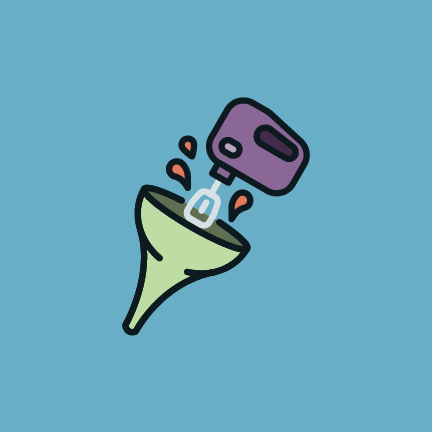Now that the days are dark and cold, all we want to do here at Willow Marketing is put on some holiday music and a festive apron and start baking.
Peppermint cookies, gingerbread, or yule logs? Yes, please! There’s only one thing that makes us happier than whipping up a batch of mouth-watering holiday treats, and that’s marketing.
Like baking, marketing is part art, part science. You should have a recipe to follow and a playbook of tried-and-true methods to move your audience along your marketing funnel.
But how do you set up a marketing funnel? Well, like all good recipes on the internet, we’ll get to that later.
While sticking to tried-and-true methods, you also want to leave room for an extra sprinkling of individuality. If you don’t do anything different, you’ll look exactly like your competitors. What can you do that no one else in your industry is doing? What is your secret ingredient or decorative element that is especially you, when it comes to your marketing approach?
Finally, like a true baking master, you need to be prepared to make adjustments. You want to be checking your dough to make sure it’s doing what it’s supposed to. And if not, you might need to make some tweaks.
When you first set up your marketing funnel, it won’t be perfect. Many marketers find “leaks” at some point in their funnel – points where leads are dropping off instead of continuing along to the purchase stage. Using analytics, you’ll find ways to iterate and improve on your funnel. Test, taste, test, taste, and test again.
What is a marketing funnel?
A marketing funnel is a user flow that shows the journey your audience travels as they go through your customer acquisition process, from first touchpoint to purchase.
What is the purpose of a marketing funnel? It helps you visualize your entire customer journey and target your content to the stage your readers are in. It also helps you build in CTAs to move them forward to the next step, rather than just bouncing from your content.
Is a marketing funnel the same as a purchase funnel or sales funnel? It depends on the goals of your marketing team and how closely sales and marketing are integrated in your organization. Some companies use them interchangeably, while other companies may separate them out with a marketing funnel that works toward a smaller goal, such as lead acquisition.
Different marketing experts will use different names for the funnel stages, just like bakers have recipe variations, but the concept is the same. Here’s the approach we use to outline a marketing or sales funnel.
What are the marketing funnel stages?
Top of the funnel (Awareness)
The top of the funnel is where your brand first interacts with potential customers. It’s named the top of the funnel because it’s where you cast the widest net – and interact with the largest number of people. This could be through an ad impression or by viewing shared content on social media. Above all, the goal here is branding and connection.
Content at the top of the funnel seeks to educate and delight while exposing people to your brand. This content usually adds value with topics relevant to your target audience and may take the form of marketing campaigns, blogs or SEO content, or social media.
If you are successful, the reader progresses to the middle of the funnel, taking some kind of action to engage with your content: subscribe, like, or download.
(Ingredients are mixed!)
Middle of the funnel (Interest, Evaluation)
Congratulations! Your viewer or reader is now a lead. Once he or she has opted in to some kind of continued content or conversation, you’re ready to take it to the next level. You can begin to introduce your leads to your product or service with more in-depth tactics like email campaigns, webinars, and case studies.
In this phase, you’re going to be narrowing in on the problems that your brand can solve. During evaluation, your audience will look for content that presents and compares solutions.
(Now, in the oven!)
Bottom of the funnel (Intent, Purchase)
To reach the bottom of the funnel, your lead has expressed some kind of clear intent that it is considering your product, such as participating in a free trial, speaking to your sales team, or requesting an estimate. Great news!
By now, your audience will have shrunk to a number of highly qualified leads. This isn’t necessarily a bad thing – readers in the middle of the funnel will continue with brand exposure, and your sales team can focus their energy on that bottom-of-the-funnel group.
In terms of marketing content at this stage, you’re focused on conversion. Aim to create in-depth content with strong CTAs at this stage, including pricing and product comparisons, sales enablement content, and promotions that nudge users to buy.
(Finishing touches… irresistible!)
Now that you’ve got the basic recipe, it’s yours to take and make your own. Happy funneling!
